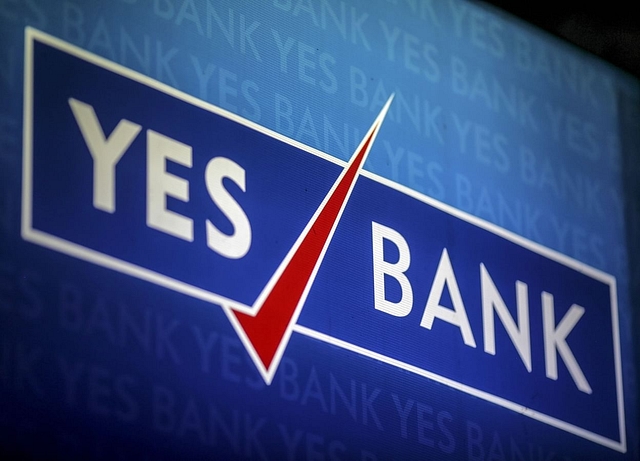
Yes Bank Crisis: The Most Frequently Asked Questions Are Answered Here
It is good that the government has recognised the need to act on the Yes Bank issue.
The success of this intervention will depend on the speed of the resolution of the matter.
Yes Bank has been struggling for a while and regular Swarajya readers are aware of repeated references in previous articles regarding the need to find a solution. The government has initiated a plan to rescue the bank and the views seem to be divided on the intervention.
Why Was Yes Bank Struggling?
It was brought to the notice of regulators and investors that Yes Bank had repeatedly understated its true non-performing assets (NPA) over the years. As one of India’s biggest and leading corporate serving commercial bank, it was considered to be one of the best for business services.
This made project finance and other related services a key area of lending for the bank. Aggressive growth and increased exposure to critical sectors such as real estate were also factors that resulted in the bank increasing its risks.
Rana Kapoor was denied an extension by the Reserve Bank of India (RBI) which cited serious governance lapses in the functioning of Yes Bank. Eventually, the true extent of NPAs was disclosed and the bank sought to raise equity.
Why Did The Government Intervene Suddenly?
After months of meetings and press statements, the bank failed to raise capital and throughout the process, leading experts started to express their reservation regarding the ability of the management to raise capital. At the same time, many depositors had also started to withdraw their money from their Yes Bank accounts.
Therefore, on the one hand they were required to provision for NPAs, on the other, they witnessed a steady decline in their deposit base.
It is a known fact that even the best of the banks would find itself to be insolvent if all its depositors were to request their money at a given point of time.
This happens as banks lend for a long term while their borrowings are nearly liquid, that is, you or I can withdraw our savings in any amount at any point in time but bank cannot recover the money it has lent out in a short span of time.
The erosion of depositor base is likely to have put the bank in a vulnerable position, which required an urgent intervention by appropriate stakeholders.
Is The Intervention Justified Or Why Should The Taxpayer/Depositor Bail Out Yes Bank?
The intervention at the moment seems to be focused on several restrictions on the bank in the short run with the intent of finding a resolution within 30 days to protect the interest of depositors.
Indeed, an intervention was needed as the bank is an important component of our financial system. Such an intervention was also needed to ensure that the risks on the entire financial system can be contained.
Consider this, everyone regards that allowing Lehman Brothers to fail was a bad decision. The same logic applies here and by rescuing Yes Bank, government has signalled to the markets that it is well aware of systemic risks, and it won’t shy away from acting in order to ensure the stability of our financial system.
The other reason that justified a Yes Bank rescue is a simple cost comparison. The cost of not rescuing Yes Bank in all probability is significantly higher than the cost of rescuing the bank. This in itself justifies any action taken by the government to ensure the trust in financial system.
Failing to act would have created more pressure on the financial system that is struggling with its own share of issues and at the same time it would have the risk of this problem extending over to other systemically important banks whether private or public.
Could We Have Done Things Differently?
There is an absolute agreement on the need for a bailout — but the key question is whether this is the only way or if there are alternatives. The answer to this question is only with the regulators and policymakers that are actively involved in addressing this crisis.
However, the RBI must avoid the temptation for withdrawal limits that were also seen in the cooperative bank crisis. Such limits tend to do a big damage to the credibility of the banking system, and it scares depositors of even other sound banks.
There must be ways to rescue the bank without these limits and one of them is either an outright merger or a takeover by a big bank. Perhaps, this solution may have worked better.
It is good that the government has recognised the need to act on the Yes Bank issue. The success of this intervention will depend on the speed of the resolution of the matter. Time is of essence here and one hopes that RBI and respective bankers recognise this as they carve the future path of Yes Bank.